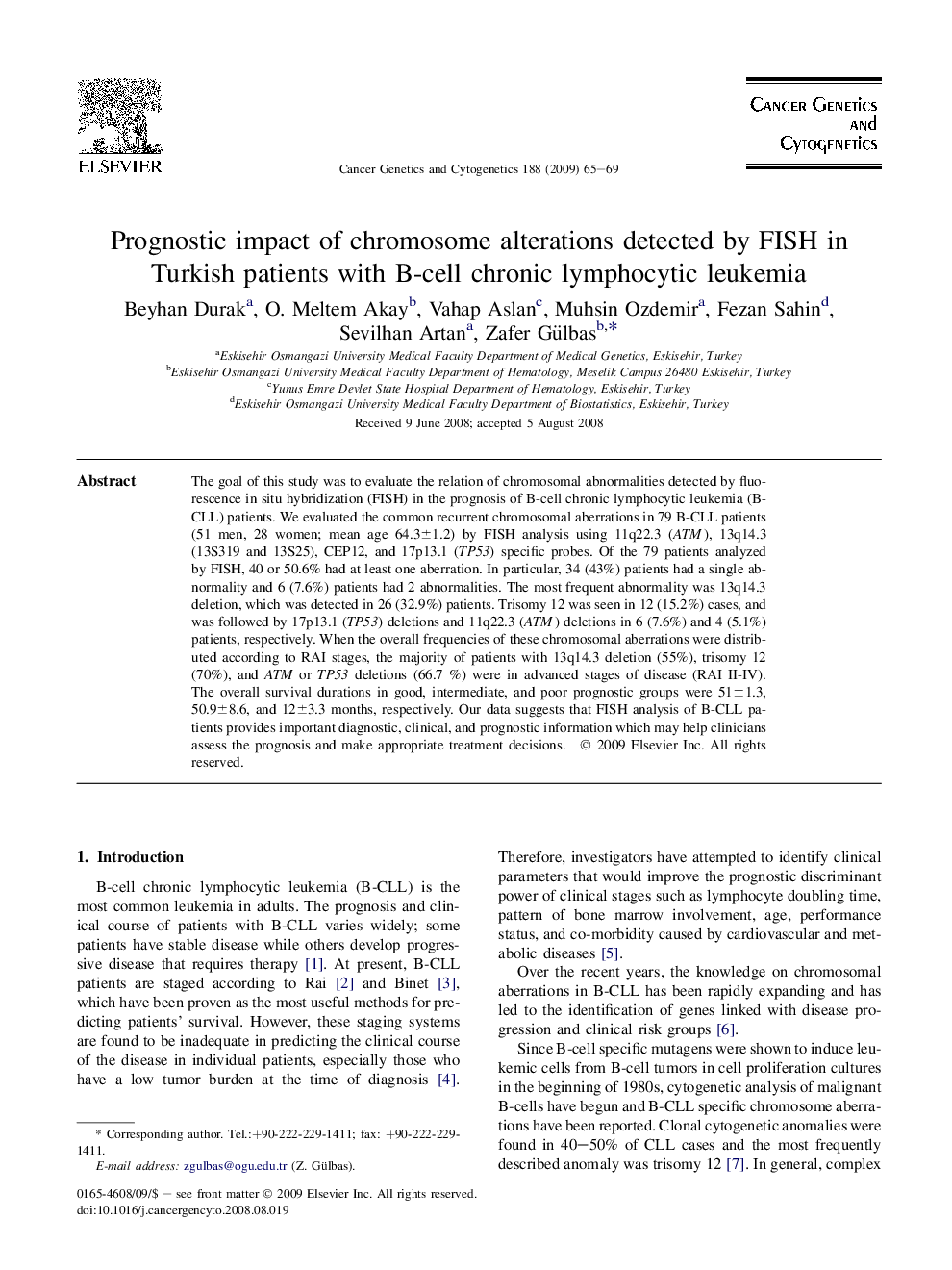| Article ID | Journal | Published Year | Pages | File Type |
|---|---|---|---|---|
| 2111193 | Cancer Genetics and Cytogenetics | 2009 | 5 Pages |
The goal of this study was to evaluate the relation of chromosomal abnormalities detected by fluorescence in situ hybridization (FISH) in the prognosis of B-cell chronic lymphocytic leukemia (B-CLL) patients. We evaluated the common recurrent chromosomal aberrations in 79 B-CLL patients (51 men, 28 women; mean age 64.3±1.2) by FISH analysis using 11q22.3 (ATM), 13q14.3 (13S319 and 13S25), CEP12, and 17p13.1 (TP53) specific probes. Of the 79 patients analyzed by FISH, 40 or 50.6% had at least one aberration. In particular, 34 (43%) patients had a single abnormality and 6 (7.6%) patients had 2 abnormalities. The most frequent abnormality was 13q14.3 deletion, which was detected in 26 (32.9%) patients. Trisomy 12 was seen in 12 (15.2%) cases, and was followed by 17p13.1 (TP53) deletions and 11q22.3 (ATM) deletions in 6 (7.6%) and 4 (5.1%) patients, respectively. When the overall frequencies of these chromosomal aberrations were distributed according to RAI stages, the majority of patients with 13q14.3 deletion (55%), trisomy 12 (70%), and ATM or TP53 deletions (66.7 %) were in advanced stages of disease (RAI II-IV). The overall survival durations in good, intermediate, and poor prognostic groups were 51±1.3, 50.9±8.6, and 12±3.3 months, respectively. Our data suggests that FISH analysis of B-CLL patients provides important diagnostic, clinical, and prognostic information which may help clinicians assess the prognosis and make appropriate treatment decisions.
